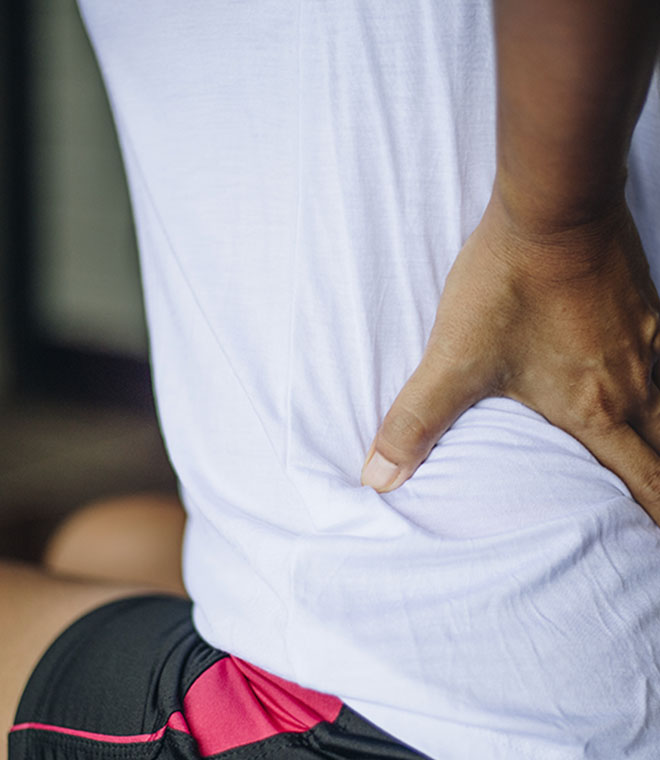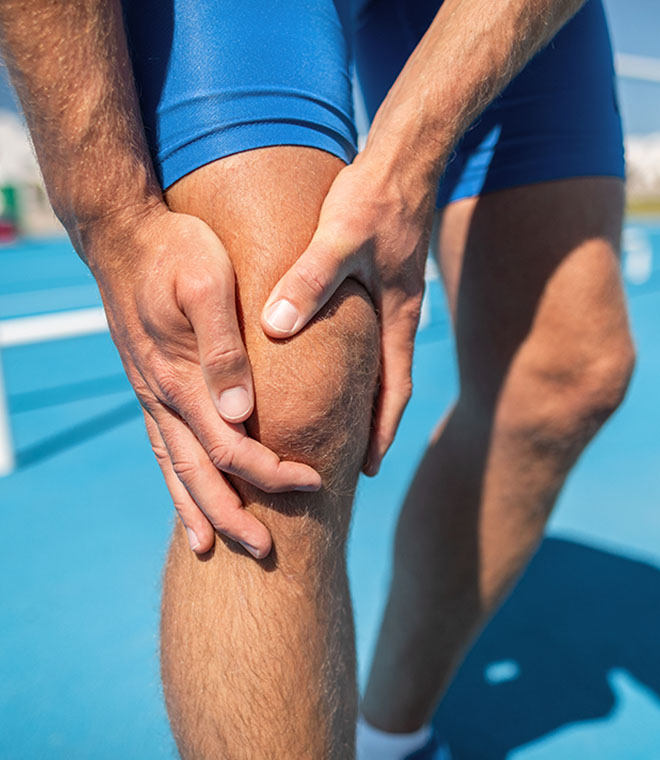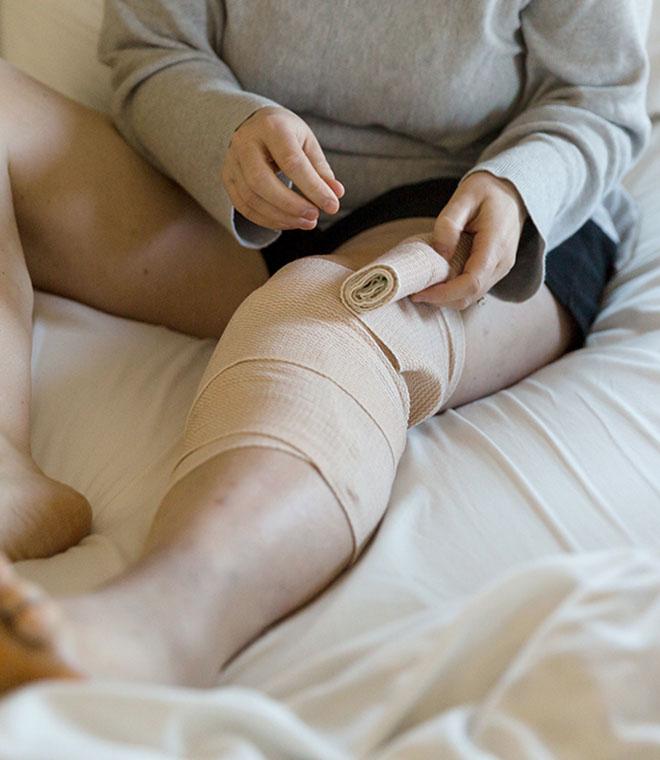Health
Products for treating and managing arthritis pain
By Daniel Keller, PharmD May 29, 2022 • 8 min
Pain in the joints and difficulty carrying out functional tasks are the trademark symptoms to arthritis sufferers.
The Centers for Disease Control and Prevention (CDC) estimates osteoarthritis affects about 30 million people in the United States, with the number of people affected on the rise. Older age is common for arthritis sufferers; however, those of any age can be affected.
Arthritis presents itself in several different forms, and joint paint is the hallmark symptom. Other symptoms vary based on the type of arthritis but may include stiffness, tenderness, weight loss, fever and fatigue. Structural damage to the joint, subchondral bone and synovium acting together work in a complex way to provide the stimulus the body perceives as pain. Pain control and functional improvement are often the goals of treatment, but some disease-modifying drugs and therapies exist for certain kinds of arthritis.
Treatment strategies for arthritis pain vary widely. Your specific lifestyle habits and goals of therapy should be considered when tailoring a treatment regimen to meet your needs. Weight reduction when appropriate, low-impact exercise, hot and cold therapy, medical equipment and pharmacologic treatment all may play a role in relieving and treating pain. Most treatment options produce only modest relief in pain and force the need for the use of multiple options to achieve satisfactory pain relief. Working closely with your doctor and healthcare team is important for determining the most effective and safest treatment for your specific health needs.
Splints and braces
Arthritis can often be managed using nonpharmacologic therapies that prevent the risk of medication side effects and interactions for those already taking other medications. Splints and braces are an option.
Splints can be effective in reducing hand pain, especially for those who suffer from symptomatic thumb-based arthritis. Splints are available in a wide range of sizes and rigidity, ranging from custom-made to one-size-fits-most and from soft to rigid firmness. Splints serve to immobilize the joint while offering protection and stability. While no splint at this time is specifically recommended, your splint should fit comfortably and securely to your hand, allowing for support and pain relief with minimal interference of normal activity.
Braces are available in many designs to provide support. Braces can reduce pain and give you more confidence when being physically active. Basic braces consist of a snug-fitting neoprene or soft material sleeve that wraps securely around the joint. Some braces are custom-made while others are available off-the-shelf. Braces may support the knee and reduce pain by shifting weight off the affected area of the knee. Braces should be selected based on your personal preference, while keeping in mind proper fit is necessary for proper function.
Hand massagers and neck pillows
Growing evidence suggests that hand massages likely reduce hand pain and increase hand function. Basic hand massages can be self-performed and may be done on a daily basis or carried out by a physical therapist. More elaborate electronic hand massagers can be purchased that use compressed air or percussion to mechanically massage your hand. Many have adjustable settings for intensity and focus the massage to the key areas of hand joint for the best effect.
Neck pain, especially when awakening in the morning, is common among arthritis sufferers and may be due to poor posture or lack of flexibility and strength. If you sleep regularly on your back, ensure your neck pillow provides support so that your head lies flat and does not tilt forward. Side sleepers should have a pillow that fills the space between the neck and ear and does not tilt the head. There are many kinds of pillows for neck pain that may work for you, and feather pillows can be helpful when creating the shape you want. Using pillows to elevate the arms can also be of benefit for arthritis sufferers.
Hot and cold
Hot and cold therapies are also used to relieve arthritis pain. While few studies exist that have examined hot and cold therapy, evidence suggests that local application of heat may work to stimulate blood flow and provide pain reduction. Heat may be delivered via heat wraps (Thermacare), steam, paraffin wax or other applications. Cold therapy is also commonly delivered using cold packs, ice sleeves or wraps and is often administered after events that stimulate joint pain and flaring. More research needs to be done to determine the best role for hot and cold therapy.
Over-the-counter (OTC) medications
Topical OTC products, including creams and gels, are available to help treat arthritis pain. Topicals are best suited for pain located in a limited area or single joint. Capsaicin cream applied topically has evidence to support modest but substantial pain relief. You may experience burning and stinging with capsaicin use; however, sensations generally diminish with continued use. Menthol and camphor-based products (Bengay, IcyHot, Biofreeze) may also help to reduce your perception of arthritis pain. Topicals are attractive options because they can be applied directly to the location of pain. They are often used along with other treatment methods.
Other OTC pain medications include oral, nonsteroidal anti-inflammatory drugs (NSAIDs), such as ibuprofen (Advil, Motrin) and naproxen (Aleve), which are proven effective for many people in treating arthritis pain. As a general rule, use the lowest effective dose or strength for the shortest time to limit side effects. Please note that NSAIDs can pose risk for gastrointestinal and kidney side effects with long-term use. Recent scrutiny of acetaminophen (Tylenol) with regard to liver toxicity and its limited efficacy make it a less appealing option for those who can use NSAIDs. Always check with your doctor or pharmacist before starting any OTC medication for arthritis.
If your arthritis pain is more severe, it will likely require more advanced treatment from your doctor and medical care team. Prescription-grade topical gels, NSAIDs and sometimes opioids are often utilized for prescription-grade pain management. Your doctor may try steroid shots directly into the joint to decrease inflammation. Surgery is routinely used as last resort for total joint replacement when adequate pain relief is not achieved with less invasive treatments.
Clinically reviewed and updated by Nora Laberee, May 2022.
Sources:
- https://www.cdc.gov/arthritis/data_statistics/index.htm
- https://www.uptodate.com/contents/management-of-hand-osteoarthritis
- https://www.uptodate.com/contents/management-of-knee-osteoarthritis?search=management-of-knee-osteoarthritis%201&source=search_result&selectedTitle=1~126&usage_type=default&display_rank=1
- https://www.arthritis.org/living-with-arthritis/tools-resources/
- httphttps://www.uptodate.com/contents/overview-of-the-management-of-osteoarthritis



